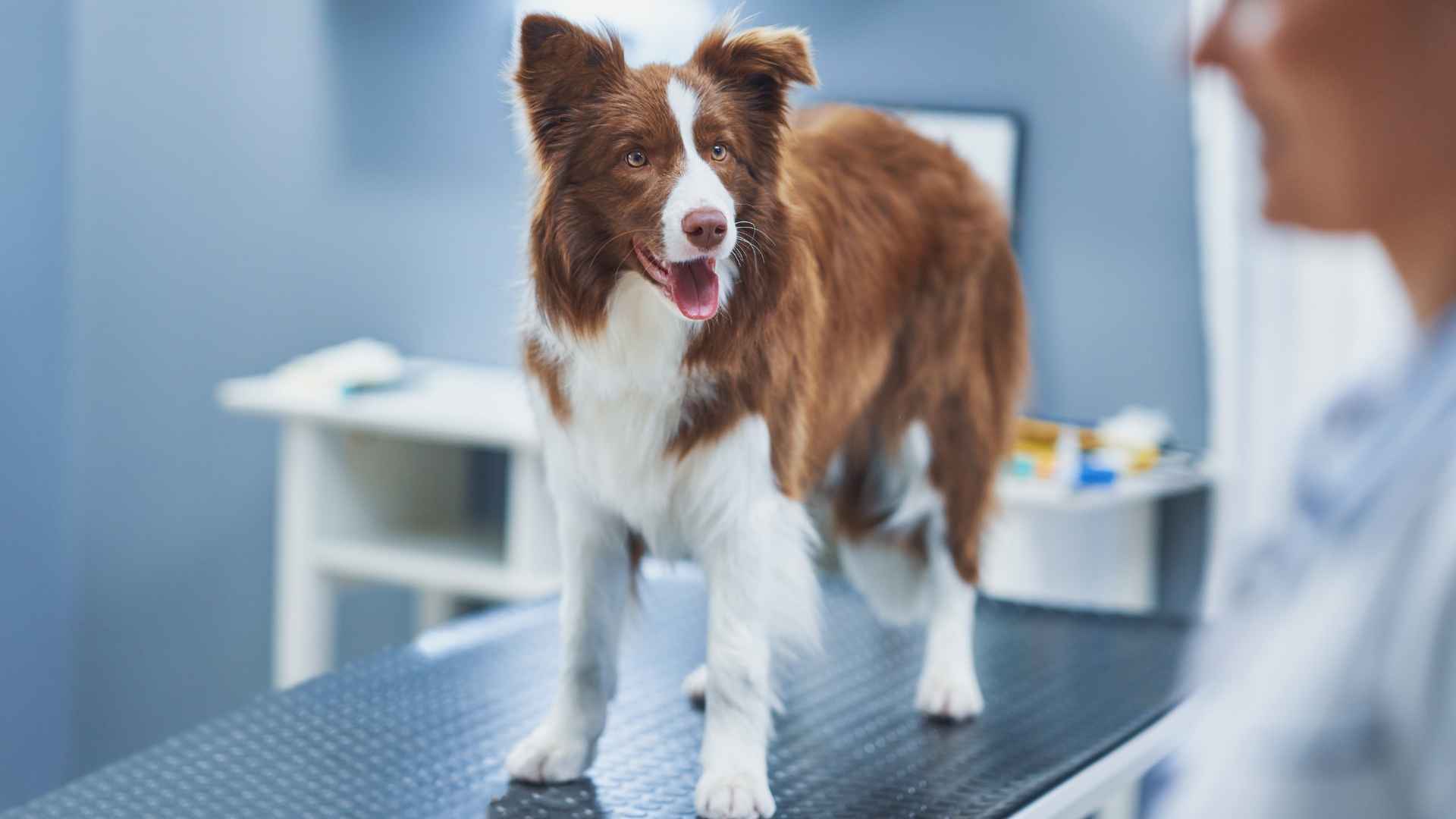Some dogs seem to be born with a clean bill of health. They dash through life with boundless energy, minimal ailments, and an uncanny ability to stay out of the vet’s office. While no breed is entirely free from health concerns, certain dogs are known for their strong constitutions and naturally robust bodies, making them ideal for owners seeking a low-maintenance companion.
Choosing a breed that rarely requires vet visits can ease financial burdens and reduce stress. These dogs often come equipped with hardy immune systems, efficient metabolisms, and a natural resilience that helps them avoid many common canine illnesses. From sturdy joints to coats that resist matting, their overall durability is a breath of fresh air for those wanting fewer surprise trips to the clinic.
Whether you’re a first-time pet parent or a seasoned dog lover looking to simplify care, these breeds deliver peace of mind and joy in equal measure. They’re proof that some pups are just built to thrive, with more playtime and fewer prescriptions.
Dog Breeds Rarely Needing Vet Visits
1. Chihuahua
The Chihuahua, one of the oldest dog breeds in the Americas and a national symbol of Mexico. According to the AKC, Chihuahuas are known for their loyalty, charm, and boldness. This terrier-like toy dog typically weighs no more than 6 pounds and stands just 5 to 8 inches tall.
Its distinctive features include a rounded “apple” head, luminous eyes, and upright ears. Chihuahuas come in both long and short coat varieties, available in a wide range of colors and patterns. With a life expectancy of 14 to 18 years, they often live well into their senior years with relatively few health complications.
Their petite frame minimizes the joint strain common in larger breeds, and their overall grooming needs are modest. While their price can vary widely depending on lineage and breeder reputation, they remain a popular choice for those seeking a small, spunky companion.
Care Needs
Despite their sturdy health, Chihuahuas require consistent care to remain in top condition. They are generally healthy dogs. Daily exercise, even if limited to indoor play, is essential to manage their high energy levels and reduce obesity risk. Coat maintenance varies: short-haired Chihuahuas need occasional brushing, while long-haired ones benefit from more frequent grooming.
Dental care is paramount—these dogs are prone to dental disease, so brushing their teeth daily is strongly recommended. Their tolerance for cold weather is low, so warm clothing during winter walks is advisable.
Fun Fact: Chihuahuas are famously vocal and will often bark to signal discomfort or alertness, making them surprisingly effective watchdogs despite their size.
2. Border Collie
Bred in the borderlands between England and Scotland, the Border Collie is a medium-sized herding breed prized for its keen intelligence and agility. Males typically stand 19 to 22 inches tall, while females reach 18 to 21 inches, with both sexes weighing between 30 and 55 pounds.
Their lean, athletic bodies are built for endurance, and their signature “herding eye” conveys remarkable focus. Border Collies can have smooth or rough double coats, often seen in black and white, but also in merle, red, and tricolor patterns.
Lifespan averages 12 to 15 years. As part of the Herding Group, this breed’s history as a working farm dog shaped its exceptional stamina and problem-solving ability, contributing to its overall resilience and minimal health issues. WebMD states that Border Collies are filled with energy and vitality.
Care Needs
Border Collies thrive on mental and physical stimulation. They need at least 1 to 2 hours of vigorous activity daily, such as fetch, agility, or herding tasks. Without an outlet for their boundless energy, they may resort to destructive behaviors.
Their coat requires brushing a few times a week to control shedding, with more attention during seasonal changes. Routine veterinary care, dental hygiene, and a nutritious diet are essential, though this breed typically sees the vet only for basic preventive visits.
Fun Fact: Border Collies are so mentally sharp and physically robust, they’re more likely to destroy furniture from boredom than visit a vet for health concerns.
3. Australian Cattle Dog
The Australian Cattle Dog, also known as the Blue Heeler, Red Heeler, or Queensland Heeler, is a resilient and intelligent breed with origins in Australia. Bred for herding cattle across rugged terrain, this compact yet muscular dog descends from a mix of domestic herding breeds and the native Dingo.
Standing between 17 to 20 inches tall and weighing approximately 35 to 50 pounds, the breed is admired for its stamina and agility. PetMD says that Australian Cattle Dogs are available in two coat colors—blue and red speckle—and are commonly called “Blue Heeler” or “Red Heeler.”
Lifespan typically ranges from 12 to 16 years, a testament to its hardy genetics. Their expressive, upright ears and keen eyes contribute to an alert, focused appearance. Truly loyal and sharp-minded, Australian Cattle Dogs are quick learners with a fierce dedication to their owners.
Care Needs
Built for endurance, Australian Cattle Dogs thrive with extensive physical and mental stimulation. Daily activities like running, frisbee, agility, or herding tasks are essential to maintain their health and happiness.
Their short double coat requires only weekly brushing, though more frequent grooming is needed during their biannual shedding periods. These dogs do well in various climates and enjoy both indoor and outdoor living as long as they’re engaged and exercised. Routine vet visits and dental care help maintain their already strong constitution.
Fun Fact: This breed is so durable that it’s often described as the canine equivalent of that one friend who never gets sick, even when everyone else is.
4. Greyhound
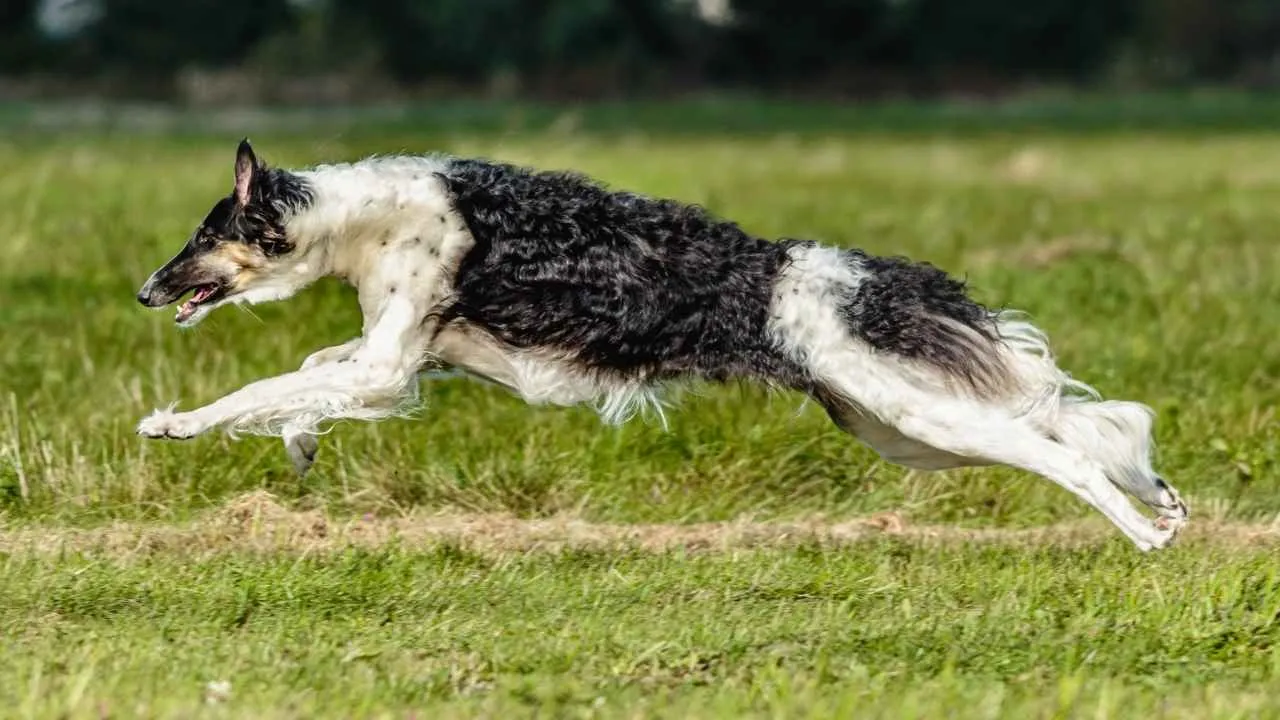
With origins tracing back to ancient Egypt, the Greyhound—sometimes called the “champion sprinter of the canine world”—is a striking hound breed celebrated for both its speed and elegant build. Males typically stand 28 to 30 inches tall, while females measure around 27 to 28 inches.
Their lean, aerodynamic bodies weigh between 60 to 80 pounds, and their short, smooth coats come in a wide variety of colors, including black, fawn, brindle, and blue. Greyhounds have a life expectancy of about 10 to 13 years and are classified within the Hound Group.
While originally bred for sight-based hunting, these dogs are now beloved for their docile temperament and impressive physical durability.
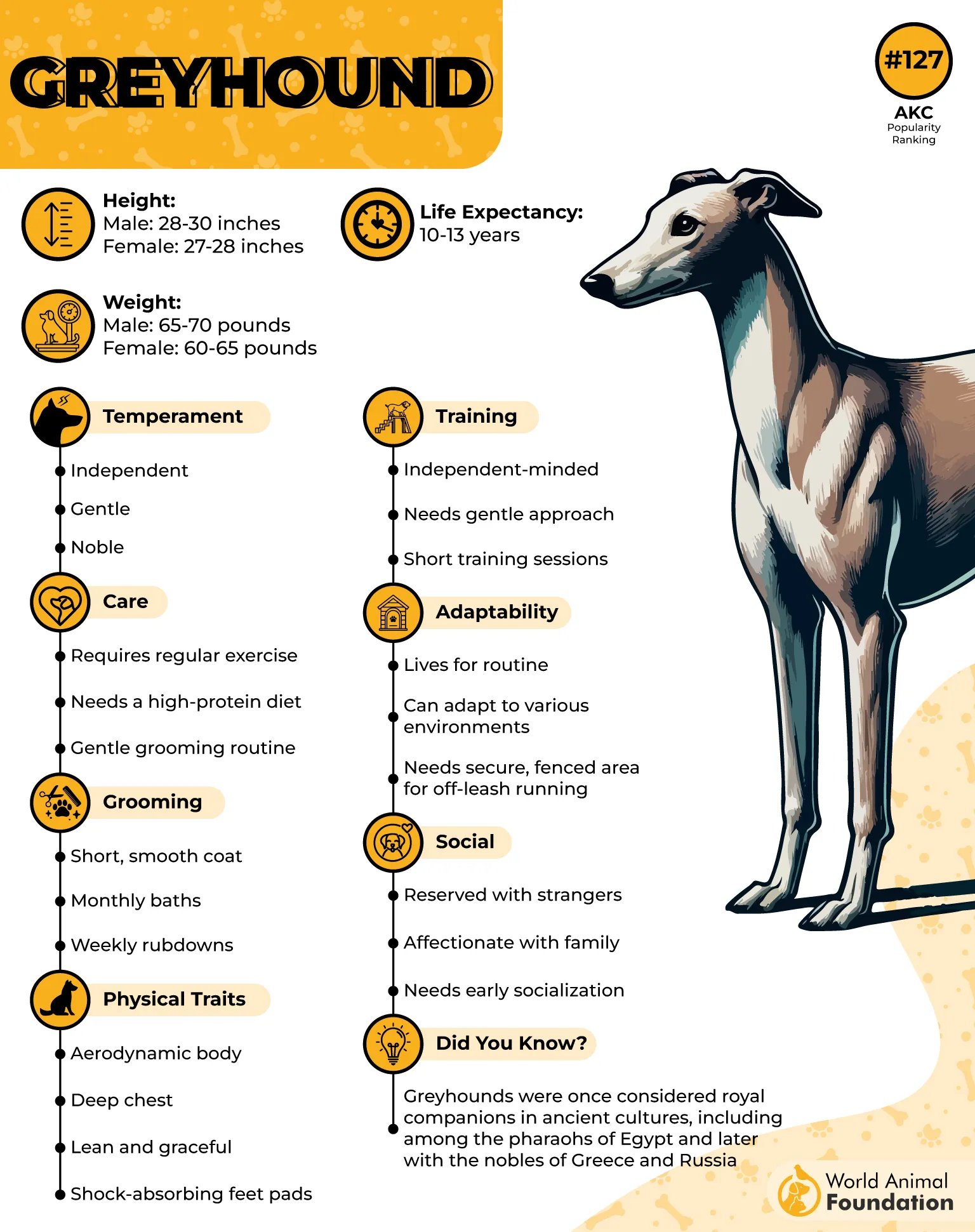
Care Needs
Despite their athletic background, Greyhounds are surprisingly low-maintenance. Their minimalist coats require little grooming—just occasional brushing to manage light shedding. They thrive with daily exercise, though a few brisk walks or short sprints often suffice.
Greyhounds adapt well to indoor living, especially in calm households, as they tend to be quiet and laid-back. Due to their lean frames, it’s best to provide padded bedding to prevent pressure sores.
Routine check-ups and a balanced diet support their health, but unlike many large breeds, Greyhounds are less prone to issues like hip dysplasia or bloat.
Fun Fact: Greyhounds can reach speeds up to 45 miles per hour, making them the fastest dog breed in the world.
5. Havanese
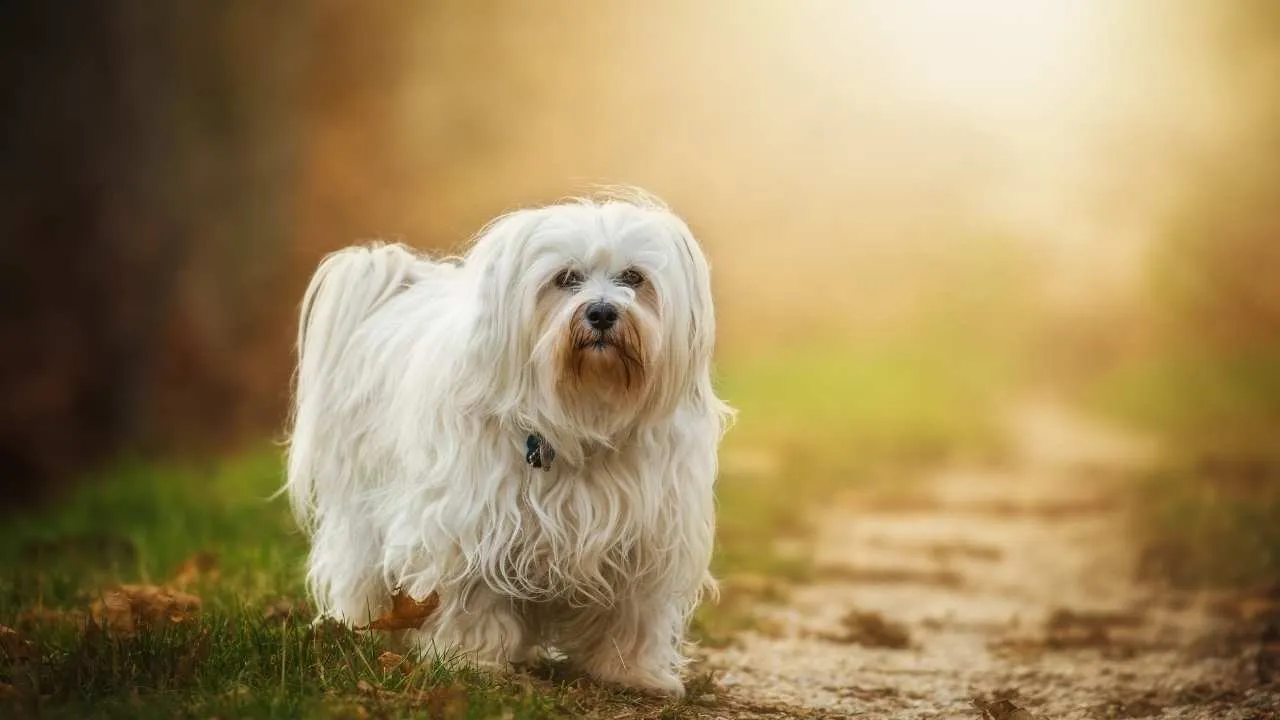
The Havanese, Cuba’s national dog, is the only breed native to the island nation and is beloved for its cheerful disposition and eye-catching looks. Belonging to the Toy Group, this small companion dog typically stands between 8.5 to 11.5 inches tall and weighs 7 to 13 pounds.
It boasts a silky, flowing coat that can be straight or wavy and comes in various colors. A curled-over tail and expressive eyes add to its charm. Known for being playful, intelligent, and people-oriented, the Havanese makes an ideal pet for city dwellers and families alike.
With a life span of 14 to 16 years, this breed often enjoys robust health, needing minimal vet attention compared to others of its size. While some hereditary issues like patellar luxation and progressive retinal atrophy may appear, they are relatively rare.
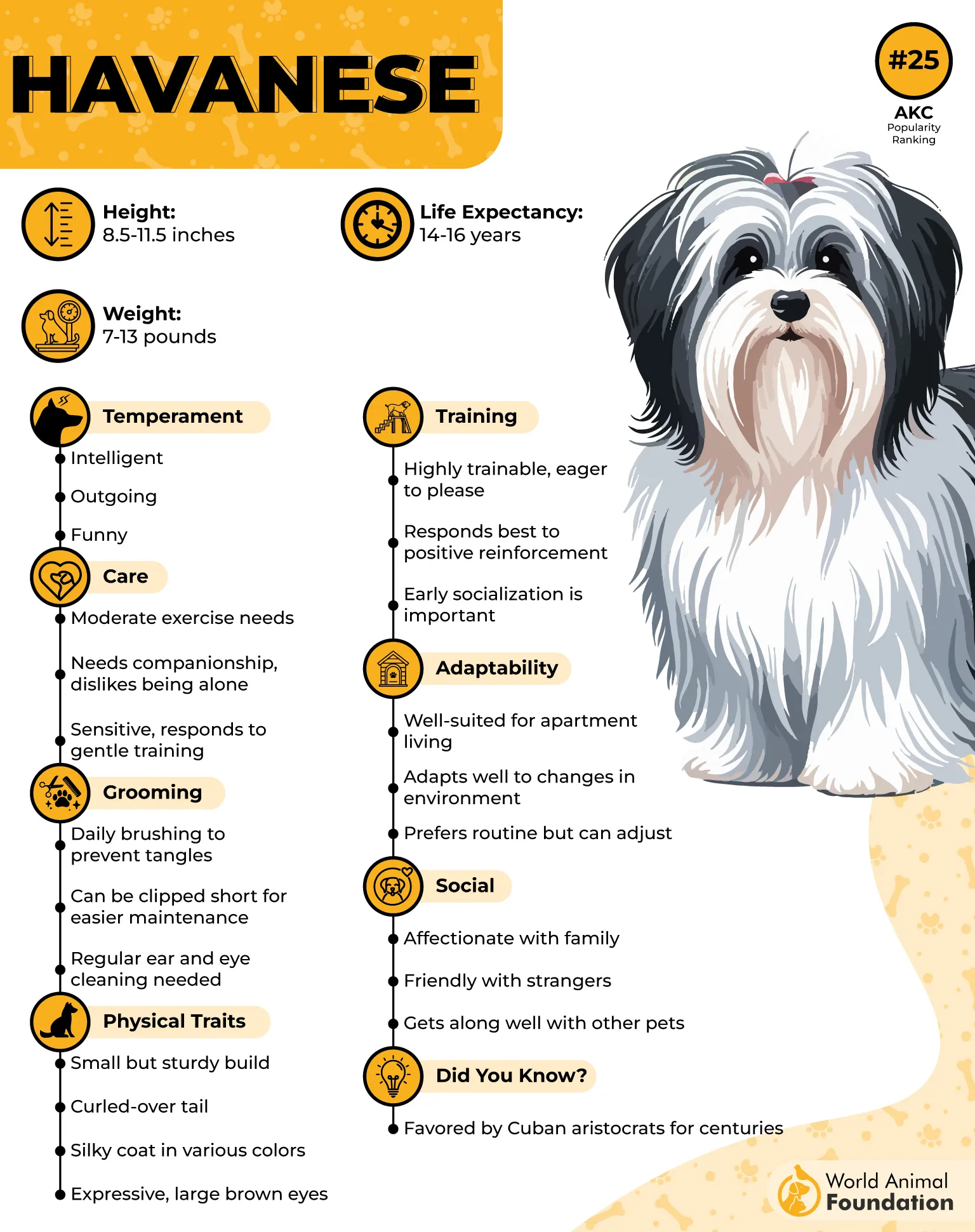
Care Needs
Despite its long coat, the Havanese is relatively low-maintenance in terms of health. Regular brushing—especially during seasonal shedding—keeps their coat free of mats, and shorter trims can ease daily upkeep.
They benefit from moderate daily exercise, such as short walks or play sessions. Dental hygiene is essential to avoid plaque buildup, and regular vet checkups help catch early signs of aging. Thanks to their compact frame and balanced energy, they tend to avoid many joint or digestive issues common in other breeds.
Fun Fact: The Havanese is often referred to as a “natural trick dog” due to its comic instincts and exceptional trainability.
6. Bichon Frise
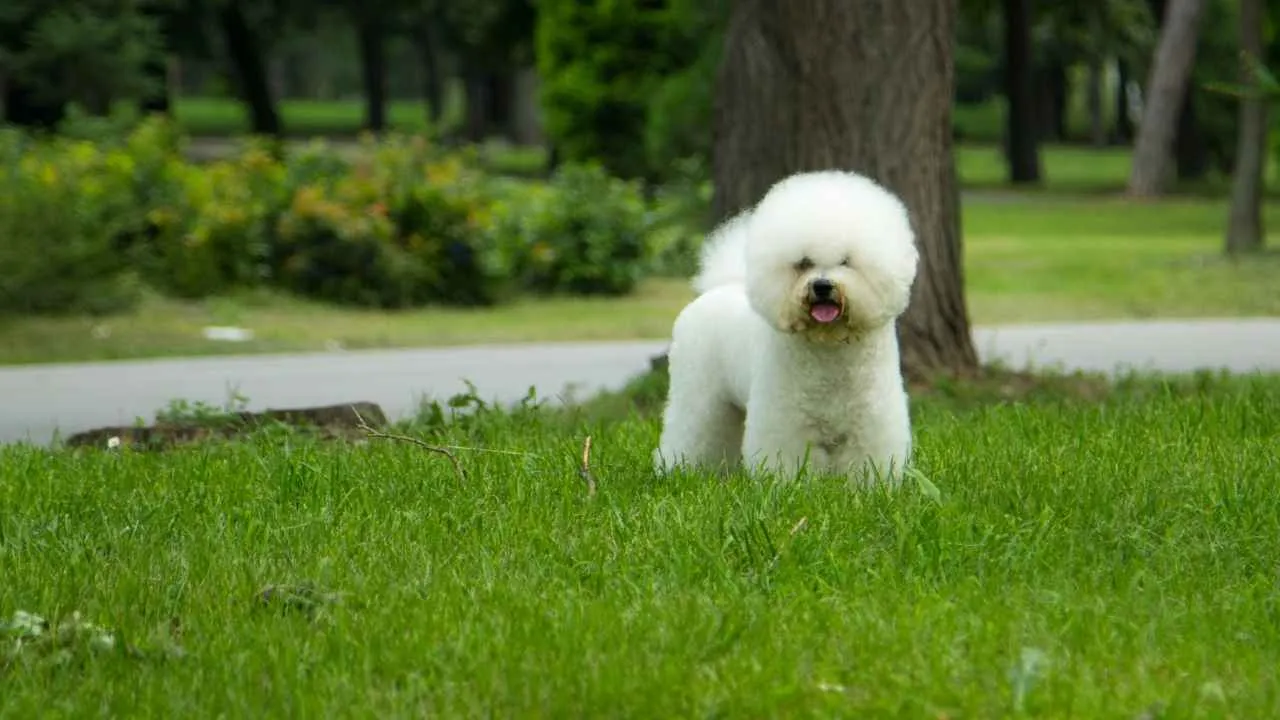
The Bichon Frise, also affectionately dubbed the “cotton ball dog,” is a small yet resilient member of the Non-Sporting Group. Known for their plush, curly coats—often in white or soft cream blends—and round, expressive dark eyes, Bichons average 9.5 to 11.5 inches in height and weigh between 12 and 18 pounds.
With roots tracing back to Mediterranean sailing dogs, the breed has enjoyed centuries of companionship with nobility and commoners alike. Cheerful and adaptable, they often enjoy a lifespan of 14 to 15 years and are celebrated for their robust health and joyful demeanor. Despite their glamorous appearance, Bichons are surprisingly hardy and require only moderate exercise to stay happy and fit.
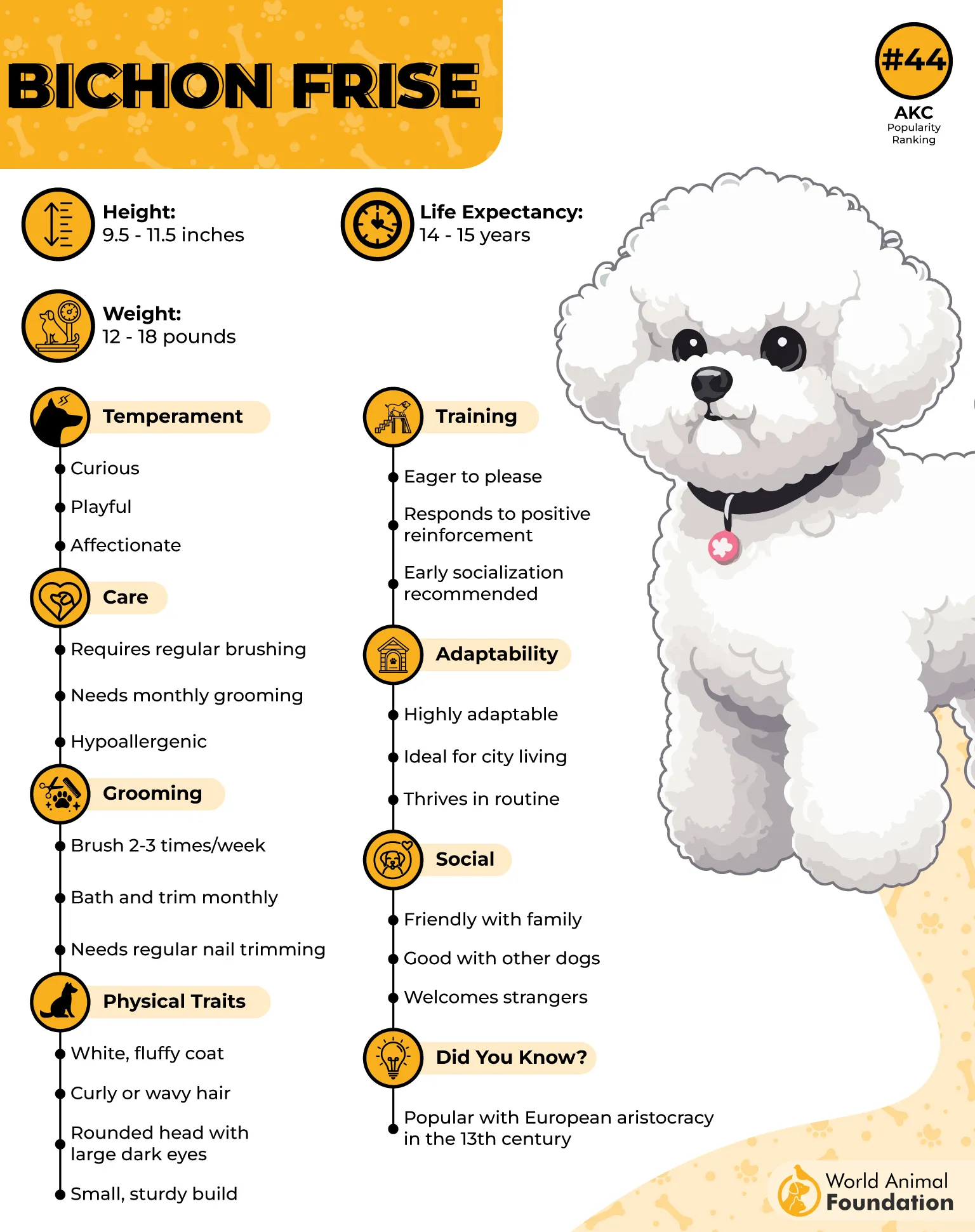
Care Needs
While these small dogs generally enjoy excellent health, maintaining their fluffy coat does demand commitment. Weekly brushing—more frequent during shedding periods—is essential to prevent matting and tangles. Regular grooming appointments help keep their iconic round appearance intact.
Due to their affectionate nature, they may suffer from separation anxiety if left alone too long, so mental stimulation and companionship are key. Dental hygiene is especially important, as Bichons can be prone to gum disease. A balanced diet and routine vet visits help ensure their continued vitality.
Fun Fact: The Bichon Frise has historically been adored by royalty and even performed as a circus trick dog due to its charm and intelligence.
7. Poodle
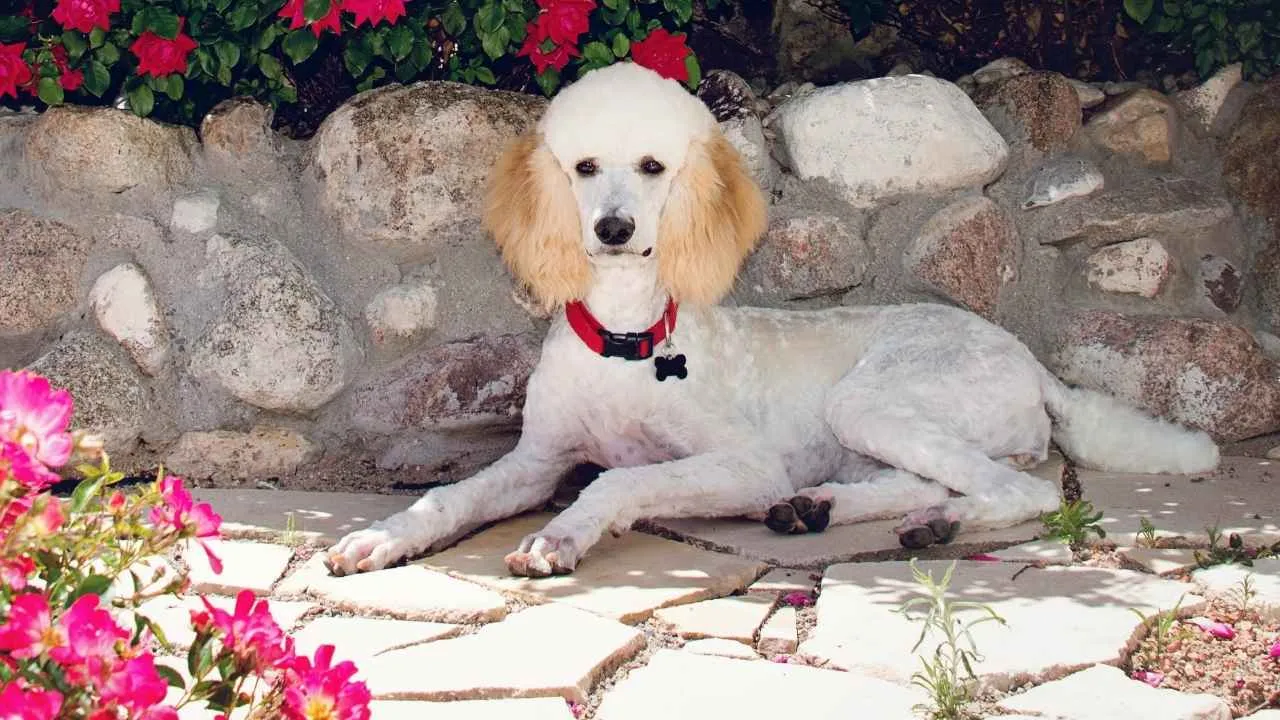
The Poodle, renowned for its intelligence and elegance, comes in three size variants: Standard (over 15 inches), Miniature (15 inches or under), and Toy (no more than 10 inches tall). Weighing between 6 and 70 pounds, depending on the size, this breed is recognized for its curly, low-allergen coat available in colors like black, white, and apricot.
Originally bred in Germany as water retrievers, Poodles later became popular across France, evolving into companion animals of aristocrats. They belong to the Non-Sporting Group (Standard and Miniature) or the Toy Group (Toy variety) and typically live 10–18 years.
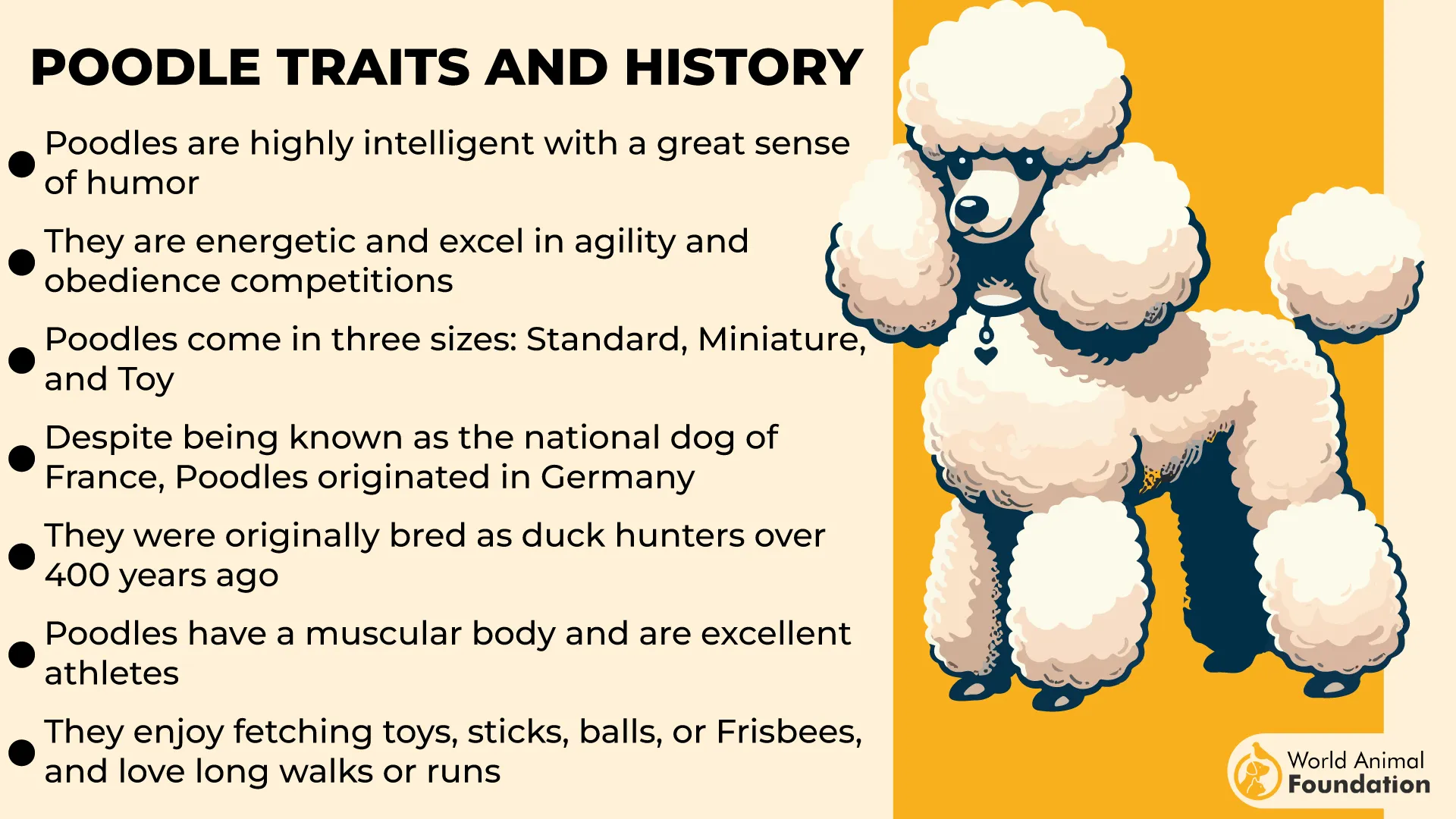
Though sometimes associated with elaborate show grooming, most pet owners prefer the practical “Sporting clip,” which highlights the Poodle’s square, athletic build. Thanks to solid genetics, Poodles experience fewer health issues than many breeds, and with proper care, vet visits are often limited to routine checkups.
Care Needs
Poodles are active and thrive on daily physical and mental stimulation—roughly an hour of exercise is ideal. They enjoy swimming, retrieving, and interactive games.
While their hypoallergenic coat minimizes allergic reactions, it requires regular grooming to prevent matting. Early socialization and obedience training are essential, especially in younger dogs, to foster a confident, well-adjusted companion.
Fact: Despite their posh reputation, Poodles are among the healthiest purebred dogs, with only minor health concerns typically surfacing as they age.
8. Siberian Husky
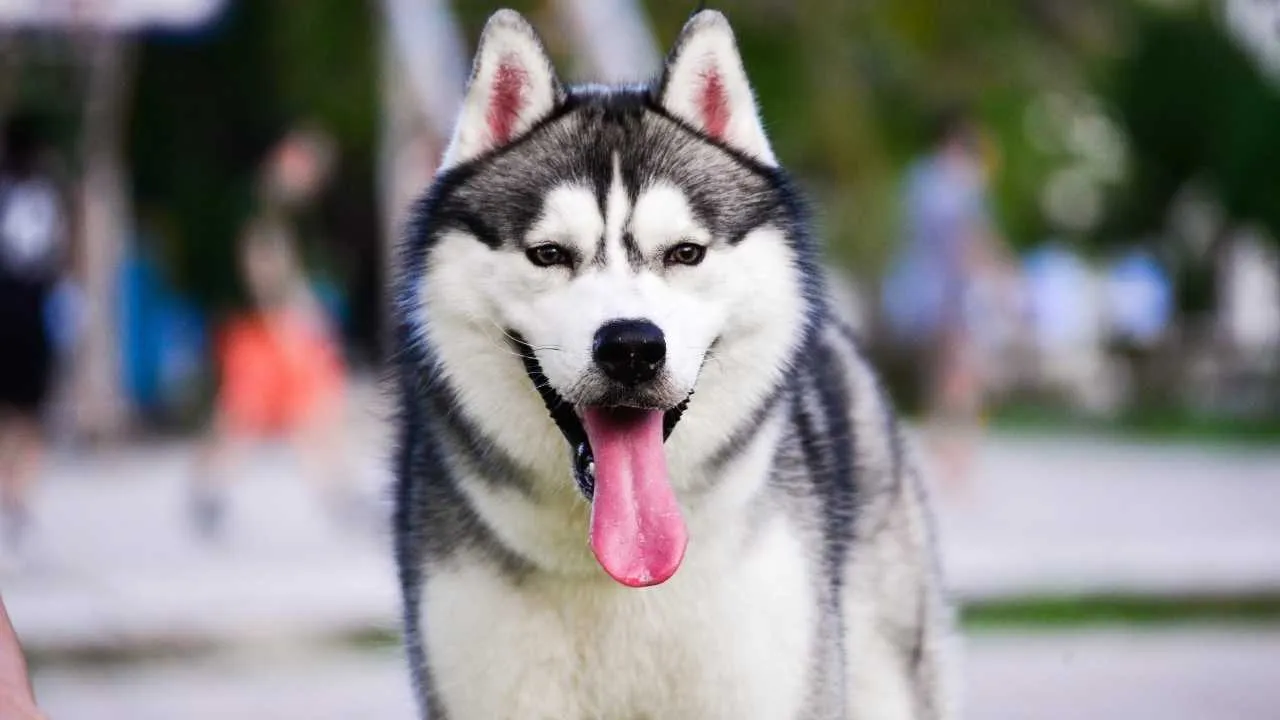
The Siberian Husky is a striking, medium-sized working dog developed in northeastern Asia by the Chukchi people. Known for their thick double coat, athletic build, and keen endurance, Huskies were bred for pulling light loads across long, frozen distances.
Males typically stand 21 to 23.5 inches tall and weigh between 45 to 60 pounds, while females measure 20 to 22 inches and weigh 35 to 50 pounds. With almond-shaped eyes in shades of brown, blue, or one of each, their expression often reflects a mix of intelligence and playful mischief.
Huskies belong to the Working Group and boast a robust lifespan of 12 to 14 years. Their resilient health, minimal genetic issues, and natural cleanliness contribute to their reputation as one of the healthiest dog breeds.
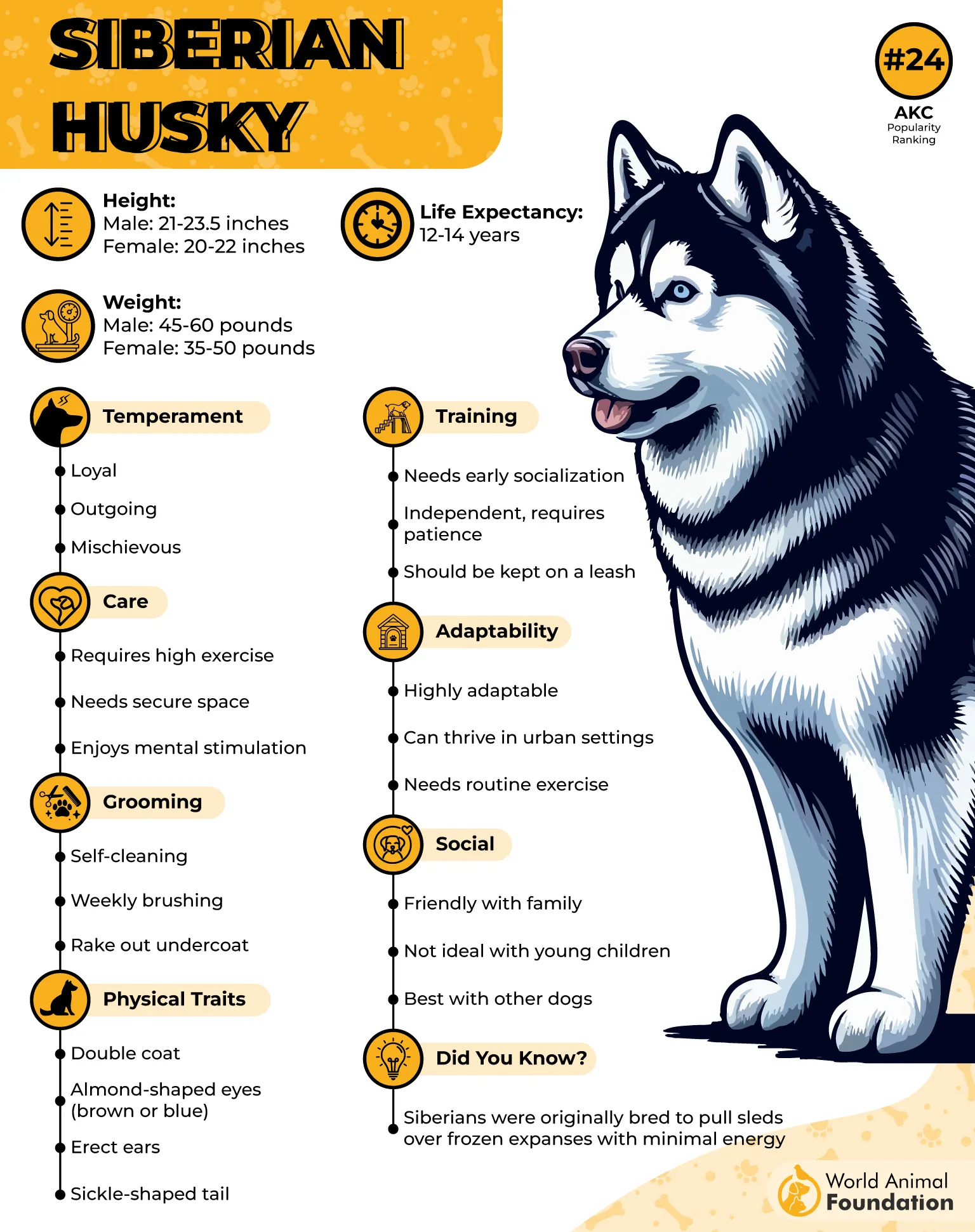
Care Needs
Siberian Huskies require substantial daily exercise to maintain their physical and mental well-being. Without regular physical activity, they may become destructive or escape-prone. These dogs thrive in homes with secure yards and owners who enjoy running, hiking, or biking.
Grooming is relatively low-maintenance, despite their thick coats—brushing a few times weekly helps control seasonal shedding. Early training and socialization are crucial due to their independent nature and vocal tendencies.
Fact: Siberian Huskies are known for their stamina and rarely suffer from serious health conditions, making them a breed that seldom requires vet visits.
9. Basenji
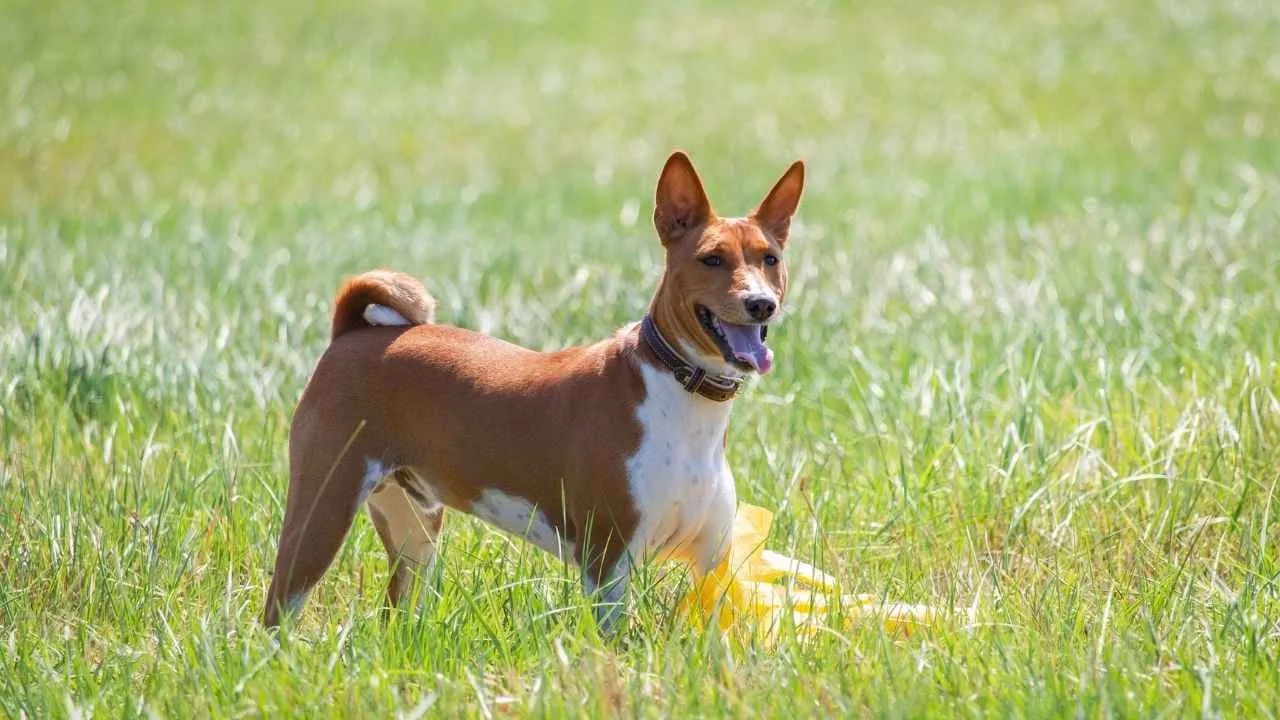
Also known as the “Barkless Dog,” the Basenji is a small hound breed with ancient roots tracing back to Central Africa, where it was originally bred for hunting. These sleek and elegant dogs stand about 17 inches tall for males and 16 inches for females, weighing approximately 24 and 22 pounds, respectively.
Their short, fine coat typically appears in shades of brown, white, or fawn, paired with a curled tail and a distinct wrinkled forehead. Basenjis have a lifespan of 13 to 14 years and are renowned for their quiet demeanor—they don’t bark but rather produce a unique yodel-like sound.
With a poised and cat-like personality, they exhibit an independent charm and a surprisingly expressive face.
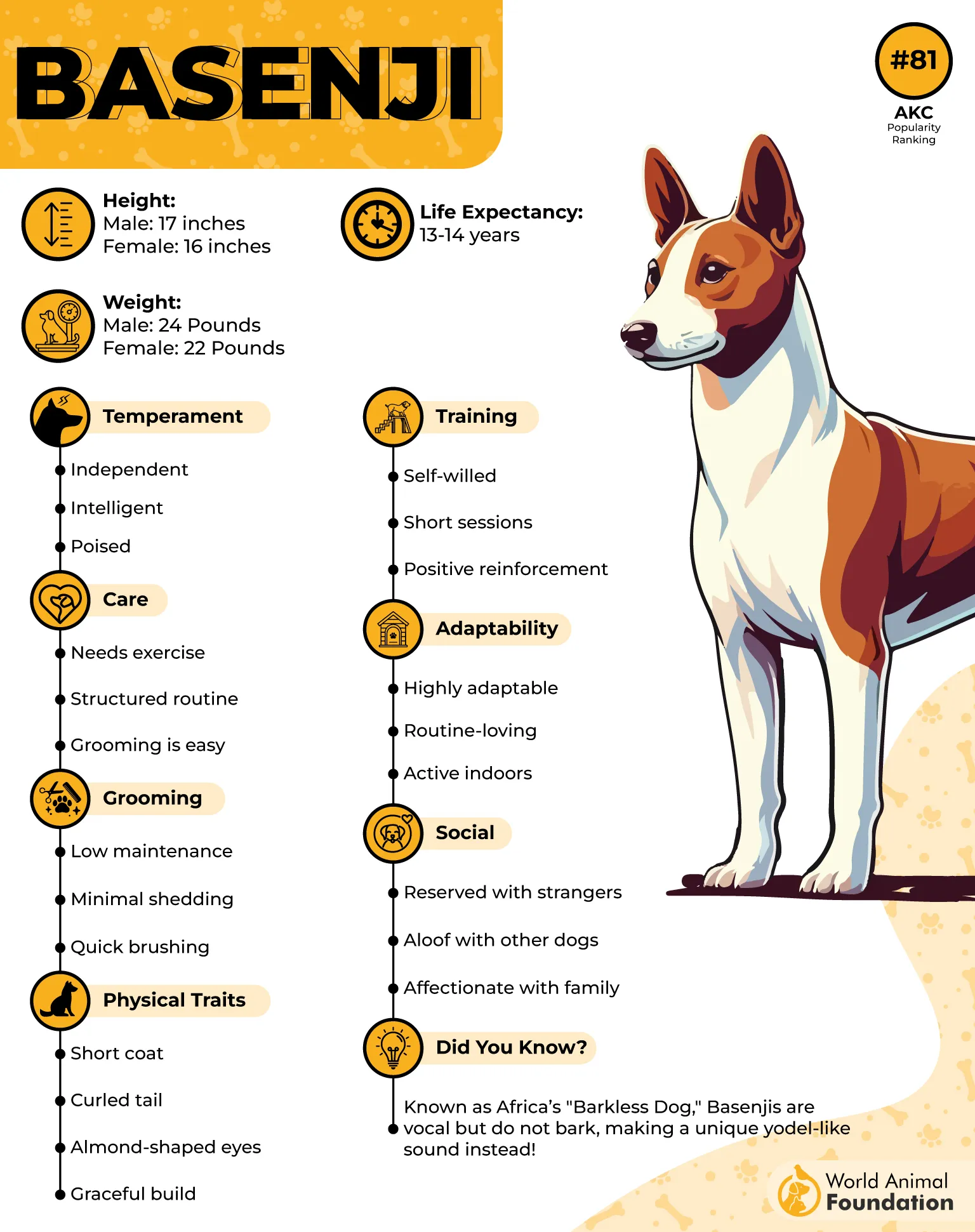
Care Needs
Basenjis are famously fastidious and groom themselves much like felines, which helps reduce the need for frequent baths. Their short coat requires minimal grooming, although a weekly brushing will keep it sleek. Known for their strong immune systems and overall robust health, they rarely suffer from common canine issues like joint or skin disorders.
However, regular exercise—about 60 to 90 minutes daily—is vital to curb their high energy. These dogs also benefit from mental stimulation through agility or scent-based games, but due to poor road sense, off-leash play in open traffic areas is discouraged.
Fact: The Basenji is so clean and self-sufficient that it’s often compared to a cat in both grooming habits and temperament.
10. Beagle
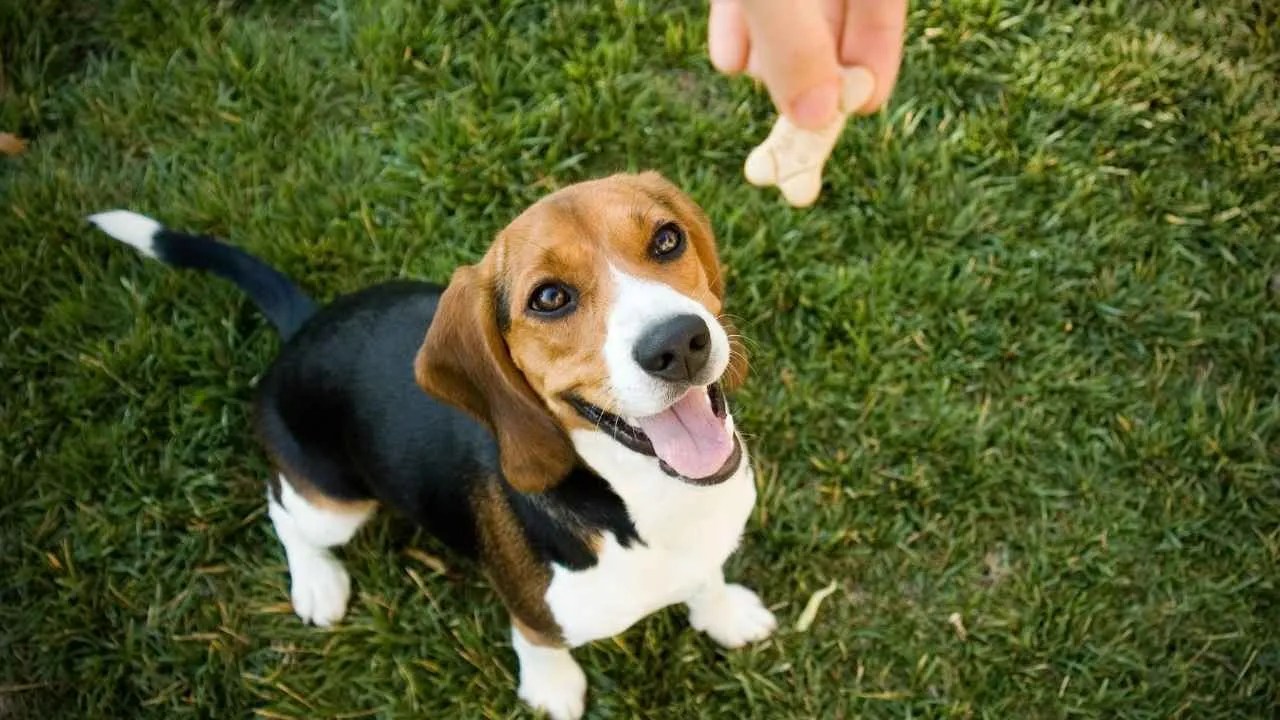
The Beagle, a compact and cheerful hound breed, is widely admired for its boundless curiosity and lovable demeanor. With roots tracing back to 16th-century England, Beagles were originally bred for tracking small game, a purpose that honed their exceptional sense of smell and tenacity.
They typically stand 13 to 15 inches tall and weigh between 20 and 30 pounds. Beagles are solidly built with floppy ears, expressive hazel or brown eyes, and a coat that can appear in combinations of tricolor, red and white, or lemon. Falling under the Hound Group, these dogs enjoy a long lifespan, averaging 10 to 15 years.
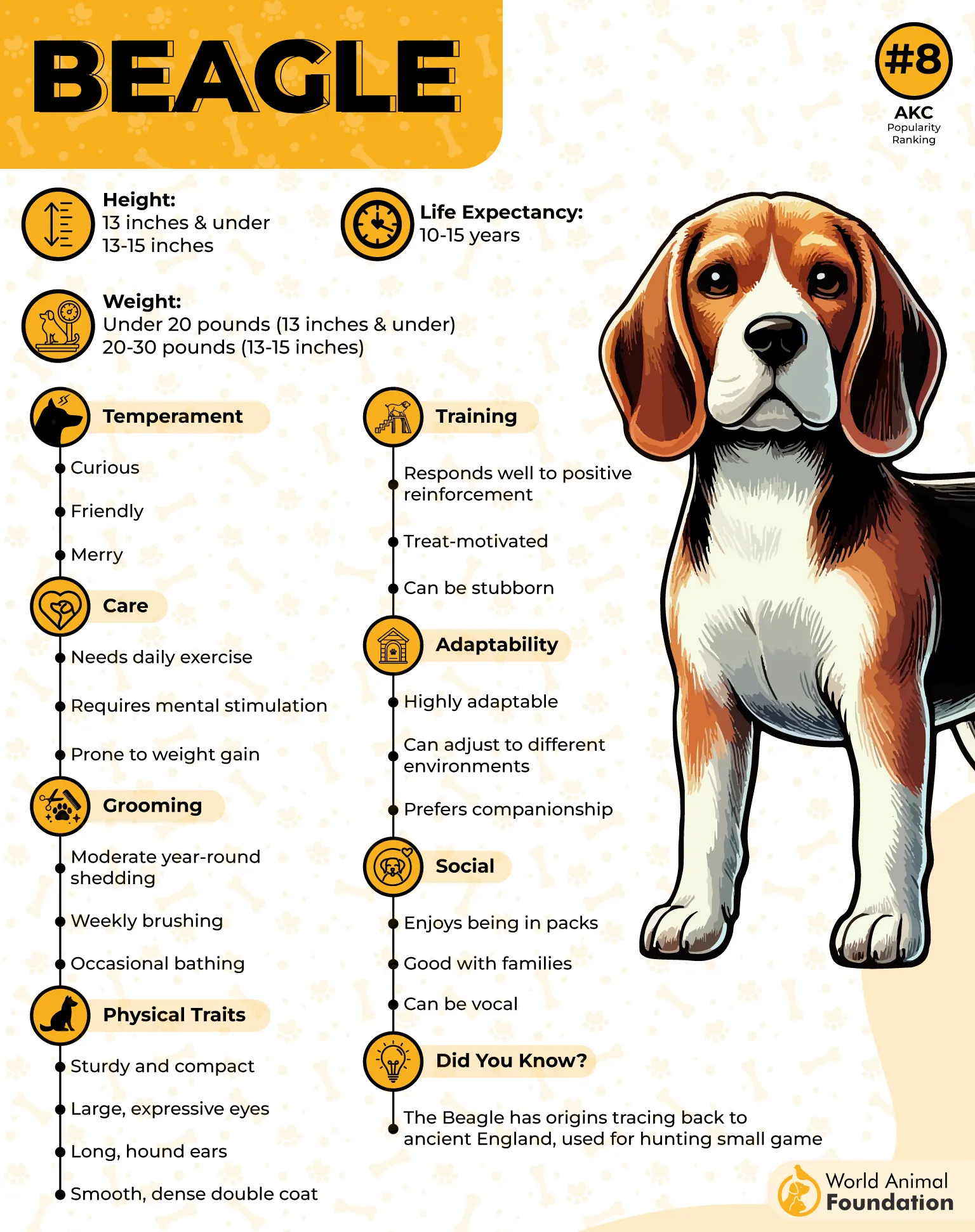
Care Needs
Beagles are low-maintenance when it comes to healthcare, earning them a reputation as one of the hardiest dog breeds. Their strong genetics mean vet visits are usually limited to routine vaccinations and annual checkups. Grooming is minimal thanks to their short coat, though weekly brushing helps with seasonal shedding.
Because Beagles are highly food-motivated, portion control is key to avoiding weight-related issues. Daily exercise—such as walks or scent-based games—keeps them physically and mentally stimulated. Though independent, they thrive on companionship and are happiest with family around or another pet to bond with.
Fun Fact: Despite their mischievous streak, Beagles rarely require emergency vet care—unless it involves sneaking food they shouldn’t have.
Conclusion
When it comes to choosing a low-maintenance, long-living companion, some dog breeds naturally stand out for their resilience. These breeds are known to experience fewer health problems throughout their lives, making them excellent choices for pet owners who want to minimize unexpected vet bills without compromising on companionship or energy. While no dog is entirely free from health risks, selecting breeds with strong genetics and a track record of avoiding common genetic diseases can lead to a more worry-free pet experience.
Many of these hardy breeds also come with minimal grooming needs, simplifying routine care and reducing long-term costs. As dogs benefit from proper exercise, a balanced diet, and preventive health checkups, these resilient pups often enjoy active, happy lives well into old age. Breeds such as the Basenji or the Australian Cattle Dog—though not discussed—are great examples of how nature and nurture can combine to create healthy, enduring canine companions.


